
by Leila Lees | Feb 16, 2016 | Uncategorized
I was met in London by a tree. I had just arrived, slightly bedraggled into Charing Cross station. Missed and found, amongst the crowds, my friend Belle and together started to meander. When you come to a place for the very first time, a thousand tourists cannot lessen the sensation of arrival into a new land and also an old land, the tangible London touching the London of my imagination made up by artists and writers and rhymes.
In that state of sensory expansion, an oak tree standing alone outside Kensington abruptly caught my gaze.
Uncannily aware I was observed, observing it observing me, extraordinarily alive.
Oaks, I read, take time to mature and live to 700 years old, they are enduring and firmly rooted. I am told that my ancestors lived in the same place for thousands of years, in Clarksfield, Oldham. My part of the family left to sail to Christchurch New Zealand. I imagined my ancestors like trees, lifting up their roots, a sailing ship with an odd assortment of trees. There is a wisdom in endurance, the ability to withstand the elements, both physically and spiritually.
There’s an oak at Judges Bay, Auckland. It’s a tree that will overlook you, so that you tend to place your back towards the trunk.
You look over the harbour with it, a companionable silence, although there is a sense it is looking further than you can see.
The bark is woven with a tight weave. In finding oak I find that there are at least 200 species all unified by the creation of the unusual acorn.
 I see my family in the manner of trees, they put down roots and stay. There is a love of land, an anchoring into a place like roots into the earth. I may come and go but I belong to where these roots go down. My aunts and uncles found their place and tended to settle, one aunt lived in the same house her entire married life, my parents similarly settled in Piripai, Whakatane.
I see my family in the manner of trees, they put down roots and stay. There is a love of land, an anchoring into a place like roots into the earth. I may come and go but I belong to where these roots go down. My aunts and uncles found their place and tended to settle, one aunt lived in the same house her entire married life, my parents similarly settled in Piripai, Whakatane.
In London it was like I went from tree greeting to tree greeting. I didn’t hug them, rather well met, a shared acknowledgement. Each encounter I was affected, being touched in an other-worldly way, a blur of edges. They let me see them through the eye of the camera, each tree held its own individuality intact, apart of place, of weather and season.

The door was opened to the trees and unexpectedly there were characters showing up. This tree appeared dotty and gorgeous. In meeting her, Belle and I started laughing. The words that came to describe her jumped out at me whilst perusing an old book called the movies published in 1957 describing the role Mary Gardner played in the movie the splendid sinner.
It was the words abandoned minx that got me grinning. On second take I also felt the grace of eccentric joy and it touched me, open-hearted.

In contrast I named this tree the hunker munker tree I also thought of it as the sideways glance tree, where if one looked in a particular way of looking you could sense a door to the otherworld. A border between dimensions, where there is an experience of breakdown of identity, a merging, where the definition of either side becomes blurred.
Time, a different pace emerges, a reminder of dimensional existence amongst the human intensity in the centre of London.
I began to wonder how the forest originally stood here. A community of trees, its relationships with people, the flooding Thames and I wondered how they fared in the great frost that Virginia Woolf described in Orlando where the ‘birds froze in mid air and fell like stones to the ground.’
Trees naturally create forests, they gather together, in abundance and in difficult circumstance. I grew up with the kanuka as the only major tree in the sand dune. When they grew in the hollows they were leggy and close together, usually in a line as if they were following a crease in the fold of the land. On the wind strewn dune closer to the sea they would push their back to the wind, bending where the muelenbeckia crept over it. Underneath was cool dark sand, a hidden place that you could crawl into, sheltered from the wind and the sun.
John Fowles in his essay the tree describes the essence of trees being a community and the wider impact and inter-connected experience of an ecosystem.
“In a wood the actual visual ‘frontier’ of any one tree is usually impossible to distinquish, at least in summer. We feel, or think we feel, nearest to a trees ‘essence’ (or that of its species) when it chances to stand like us, in isolation; but evolution did not intend trees to grow singly. Far more than ourselves they are social creatures, and no more natural as isolated specimens than man is as a marooned sailor or a hermit. Their society in turn creates or supports other societies of plants, insects, birds, mammals, micro – organisms; all of which we may choose to isolate and section off, but which remain no less the ideal entity, or whole experience, of the wood – “
 There is a pleasure to lie on the ground and look up at the forest canopy to see the branches working round each other.
There is a pleasure to lie on the ground and look up at the forest canopy to see the branches working round each other.
Sometimes I would soften my vision to see the small auras around each twig, shaping the space, creating a pattern of growth.
We started to walk towards the National Gallery on the way we saw a squirrel flagrantly lie back in the arms of a tree as if the warm afternoon sun was to be savoured.
Squirrels and jays serve as the seed dispersal agents for oaks because acorns are too heavy. It’s called scatter hoarding where the squirrel and the jay make hoards of acorns in all variety of locations, they also retain large mental maps of cache locations. Luckily for the trees the odd acorn may get lost and once an acorn sprouts they are less nutritional.

As we walked I happened to look to my right in time to see a tree with a distinct animal face. It was remarkable, it was an oak. In an unexpected way I entered London through its trees.
The following images are of the trees in Knole Park, Seven Oaks, just south of London. I always wondered if there was a word that describe those abnormal spherical, twisted gargole like protrusions in the truck and along branches and I found the word its called a burl. Burls are formed when bud growth cells deviate by dividing into many directions. The bark on the burl will often appear coarser and inside the grain is twisted and very compact.


.

by Leila Lees | Jun 17, 2015 | Uncategorized
Deah found two Minke whales washed up dead on Waikawa beach last week on the Kapiti coast. She wrote this poem after finding the second whale.  Minke Whale – Dead In life she cruised the oceans deep Sieving time as with the tides. Awakened, untouched in her element Fulfilled and for-filling purpose Solitary Free. She looked as Minke looks, Of fat, length, flippers long, dorsal curved. Bullet head, baleen filters, grooved throat. And carrying unborn calf. She ingested mans dross For she encountered so few and knew little of their way. Innocent, Trusting Alive on the waves Curious of man And now dead She died on beach, Throat clogged. Bulldozer ripped from element water. Dragged with no ceremony Jaw removed Unmarked grave Duveted by dune. Crisscrossed tracks Wind to remake her bed. And long dead.
Minke Whale – Dead In life she cruised the oceans deep Sieving time as with the tides. Awakened, untouched in her element Fulfilled and for-filling purpose Solitary Free. She looked as Minke looks, Of fat, length, flippers long, dorsal curved. Bullet head, baleen filters, grooved throat. And carrying unborn calf. She ingested mans dross For she encountered so few and knew little of their way. Innocent, Trusting Alive on the waves Curious of man And now dead She died on beach, Throat clogged. Bulldozer ripped from element water. Dragged with no ceremony Jaw removed Unmarked grave Duveted by dune. Crisscrossed tracks Wind to remake her bed. And long dead.

by Leila Lees | Apr 28, 2015 | Uncategorized
 We are deeply impacted by land, land influences us as we grow as children, it will mould community, create patterns of ritual, of survival and culture.
We are deeply impacted by land, land influences us as we grow as children, it will mould community, create patterns of ritual, of survival and culture.
As a culture we need to acknowledge that fundamental relationship rather than keep in separation from it.
We impact land through our mind, our emotions and through how we change it physically to suit our requirements.
Land healing will be required for the following reasons; where there has been any distortion of energy by humans for their own power or protection in the past, where there has been bullying/abuse creating suppression and fear, addictive behavior, depression, and hatred. Where there has been battle, violent death, accidental death and suicide and where there has been an overriding use of land without reference to the natural landscape.
Our ability to create form through thoughts, means that energy may need to be cleared regularly in offices, schools, therapy rooms and public places like council meeting rooms, retail stores and libraries.
Because we are not a culture practiced in the awareness of energy, we tend to shut down our awareness of it or be in reaction to it.
Just like any form of healing practice, we need to bring awareness to ourselves how we are in landscape, so we are aware of our own separation and projection.
 So we need to look at our relationship with land, in this we may see what our relationship is with natural resources, the marking of boundaries on land and what our personal emotional response is to land. This creates identity and we also have cultural identity to land. We may not be aware of our projection of identity and how this may influence our ability to be with a particular place. The projection of identity is so powerful that newcomers to a land, will project on top of that land what they are familiar with and identify with. This is colonization of land, there is no co-creative relationship, the relationship is one of domination and this has the greatest impact on land.
So we need to look at our relationship with land, in this we may see what our relationship is with natural resources, the marking of boundaries on land and what our personal emotional response is to land. This creates identity and we also have cultural identity to land. We may not be aware of our projection of identity and how this may influence our ability to be with a particular place. The projection of identity is so powerful that newcomers to a land, will project on top of that land what they are familiar with and identify with. This is colonization of land, there is no co-creative relationship, the relationship is one of domination and this has the greatest impact on land.
So we begin with our approach to land
Protocol
Imagine you’re at home one day and a complete stranger walks into your home, without knocking on the door or even being aware there might be a door. He doesn’t even see you, it’s like you are completely invisible to him. You start to try and attract his attention. “Hey what are you doing here?” he can’t hear you or see you. He starts removing things; pushing stuff out of the way, he has tools; he starts to break up the floor boards because he’s interested in seeing what’s underneath.
Or imagine this scenario
A stranger walks into the house; he actually trips over the doorstep. He sees you for a moment gets a fright, closes his eyes. He then blocks his ears and starts humming loudly. He then opens his eyes and starts talking to the ornate dining table that you inherited from your mother in law. He tells the table he understands that he has a very special role here. Then suddenly lifts up the table, he is in a hurry and goes out the door, it’s quite a heavy burden but he knows he is up for the job. It’s a bit difficult getting it through the door but he manages it by taking the door off the hinges. You are wondering what he is doing you try to pull him back, he starts to use more force so you let him go with the table.
Protocol in land healing starts with your approach and your intention. There is a powerful intelligence that you are working with and it can read your intention a mile off. Think about where you should begin on the land and even where you should leave the car. When you come onto the land pause and go quiet. Imagine that you are visiting somebody, you are entering their house and so what you want to do is be really respectful to how that person is living. You knock on the door and they invite you in. That’s how it should be when you enter into land. In this way you will be allowed in. I have seen situations where people create an illusion of power and energy but in fact they haven’t entered into the deeper aspects of the land, which will gift you back immeasurably. This is about a relationship. The first approach to land is to arrive in a state of listening.
 Begin with Greeting, a sign of welcome or recognition, to receive or acknowledge.
Begin with Greeting, a sign of welcome or recognition, to receive or acknowledge.
I open myself to connect with you. I allow space and time for you to come forward to meet me. I acknowledge I do not know you, so that I am able to listen and see with new ears and eyes. I am here, I am not needing to be any where else
This is the nature of greeting. It is about connection. When we connect there is a two-way movement. There is a lovely dance with connection where two people very slowly allow their forefingers to slowly connect. It’s the practise of connection, the focus of it is also allowing an insight into the consciousness of the etheric to connect as well, the slowness of this play of connection pulls away at our barriers and protections. Oddly the slowest most respectful connection may feel vulnerable, as to see is to be seen.
Take the time to greet and thank the guardian of the land, the trees, the animals, the birds and recognise that we are part of everything. It is important to begin simply.
Look at what the wind is doing, observe where the pre-dominate wind is, you can do this by observing the trees, how they grow, trees will ‘create a back’ to the wind, like someone turning their back to the wind and curving over to try to open an umbrella. Trees are worth while observing, check out the predominate species, they will give a sense of the essence of place and to feel the essence of the place is crucial in land healing.
Take time to connect to the soil and the rocks. Smell and taste the minerals. Lie back and look up at the sky, hang out with the overview. If there is a hawk, imagine you are flying with it feel the lift of the wind, the hill formations, the valleys and the plains. Come to land, be with the plant world, the skin of the earth and then observe the trees again. What trees attract your attention, look at where they are positioned? I work with trees often in land healing; they are already helping energetically as well as creating healthy ecosystems. Observe the waterways how they are flowing, how they have been changed. This also impacts the flow of the energy of the land. Check where the directions are.
This will open the doorway to be allowed in.

by Leila Lees | Feb 16, 2015 | Uncategorized
Ferry Crossing

different
views into the strait
fading into conversation
~
place
and connection
~
Graphite/ Charcoal/ Pencils
~

open the door on the soft light
the hibernation finished
~
start drawing
anywhere
~
 shadow hills
shadow hills
block out the
and still in the night
I see
the trees
silhouette
Browns Island
 ~
~
there’s a star
one
in-between the winged
clouds
 ~
~
practising scales of shading

~
one star
then another
the sky black
the water inky and rippling
~
light and shadow
on the hills – went out of rhythm

a bit of wind out here
~
draw
first the line on the horizon
~
 foregrounds
foregrounds
packed
or restfully blank
~
hills above matiatia
5b pencil
~
 motuihi island
motuihi island
2b pencil
~
Motutapu
the yellow-steep cliffs ripple
In contrast to the green tops
~
Motukorea
when light
bathes the object from one side
there is a point
at which the light stops
 and becomes a shadow
and becomes a shadow
~
bean rock
drawing it
closer and
~
The best memory isn’t as good as faded ink
Chinese proverb
~
white cloud above the city
soft cream
~
the water
thick
mist in the hollows
 of kohimarama and mission bay
of kohimarama and mission bay
~
looking back
~
autumn wind
trickles a dry leaf on the pavement
~
waiting for the taxi
not good
at waiting
~
 she is very still
she is very still
tiny
her skin loose
fragile
eyes
glazed
~
wonder what I am doing
leaving her
buy some peppermints
waiting again
it begins to rain
8.45 boat
~
charcoal
willow tree
compressed extra soft
~
the wharf lights
like praying mantis
reflect outwards
a white totem
ribboned and spiralling
into the darkness
~
charcoal rubber
put into a film canister
~
rangitoto invisible
in the night
hidden cradle
gently rocking
~
drift whift
deep sleep
wild ocean
~
wind
changing
patterns
~
EE lumograph
~
missing
a small ruler
in my pencil case
~

first the day
is bright
~
I wasn’t there
dislocated
I should have
so tired
~
graphite
sandpaper the graphite
 ~
~
it’s like a gap to walk through
this bright autumn sun
~
Emily Dickenson
“…a courteous, yet harrowing Grace
As Guest, that would be gone –
And thus, without a Wing
Or service of a keel
Our summer made her light escape
Into the Beautiful.”
~
the large sting ray
is almost at the same place
~
a cloud in front of a cloud
as if it shouldn’t belong
there
~
there’s a little bit of a swell out here
~
horizon line
lines of composition

~
words are uncertain
as if they get lifted to their unformed
space
as if they could take
some other meaning
as if the way the letters
are no longer
able to form the word
~
the coromandel
softens behind the cloud

~
wings of gull grey
the sky is watercolour
~
soft rain
constantly moving
concentric patterns
on the black cement
~
small congregations
of dark clothed people
huddle in the shelter
waiting
~

heavy grey sky
yellow ochre
vandyke brown
ultra marine
grey
~
epigenetic
a given order
~

bright
sharp weather
small note
on sparrows
how did they
get here
~
clay cliffs of motutapu
 ~
~
one gull flying
as if on a mission
three men rocking in a boat
fishing
~
marker pens
~
 the thought
the thought
drawing
the line
~
learning
to use
these materials
mum left behind
~
someone kayaks
in the wake
 ~
~

knitting
a petral speeds through the waves
books
sudoku
pieces of work
unravelling
the ferry crossing
the ferry crossing
~
poetry and drawings by Leila Lees

by Leila Lees | Jan 12, 2015 | Uncategorized
 I grew up with books. The library was positioned south in the house, the shelves were wooden, stained a dark brown, and went from floor to ceiling. A place for meandering, without moving from the odd assortment of chairs. They were the chairs that didn’t quite suit the sitting room.
I grew up with books. The library was positioned south in the house, the shelves were wooden, stained a dark brown, and went from floor to ceiling. A place for meandering, without moving from the odd assortment of chairs. They were the chairs that didn’t quite suit the sitting room.
There was an rocking chair covered with faded velvet like an old smoking room jacket.
There was a chair designed for giants, like a dining chair that took on growth hormones. I remember the seat was made of cream tapestry; you could trace the texture of the faded patterns with your finger like reading braille. There was the chair I was told was a carving chair, it had a curved back that took up two sides, which allowed two ways of sitting. Its seat, old green vinyl, took imagination just to sit on it. When I wanted books that were on the highest shelves I would balance precariously on the arms of the chairs rather than use the stepladder, bracing myself with one foot on a shelf. The poetry section particularly lent itself to this precarious wobble. A library predominately of non-fiction and anything that you ever wanted to know was somehow embedded in those shelves. The classics were in a small cabinet with latticed glass and a small finely wrought key. It was situated in a gloomy alcove of the hall. To open the cabinet you unlocked it with the key. This was a reverent, kneeling down secretive library. On top of the cabinet sat the antique Indian elephant gong, next to a pretty lady with a pink broken slipper. There was a story with the elephant gong that had got lost and so it held its mystery, the pink slippered lady used to sit upon the mantle piece above the fire. She had broken her shoe because my father had chased a mosquito with a pillow, knocking the fine lady down. In this cabinet were the curiosities of Dickens, particularly an old copy of The Pickwick Papers of which I would take outside and amble to the garden choosing to hunker near the peach tree, the perfect place in which to read a world so remote to my world of Piripai.  The classics, were generally ‘Everyman’ books, but The Pickwick Papers was published by ‘London and Glasgow Collins clear-type press’. It had the perfume of old book, the paper fine and light with sepia illustrations and a blue hard cover.
The classics, were generally ‘Everyman’ books, but The Pickwick Papers was published by ‘London and Glasgow Collins clear-type press’. It had the perfume of old book, the paper fine and light with sepia illustrations and a blue hard cover.
To read The Pickwick Papers you unlock another rhythm, a delicious and humorous sympathetic parody.
You relax into long sentences that are as circuitous as the mind of Mr Pickwick himself. Once you turned over the frontispiece and past the four pages of contents you begin with this one sentence. “The first ray of light, which illuminates the gloom, and converts into a dazzling brilliancy that obscurity in which the earlier history of the public career of the immortal Pickwick would appear to be involved, is derived from the perusal of the following entry in the Transactions of the Pickwick Club, which the editor of these papers feels the highest pleasure in laying before his readers, as a proof of the careful attention, indefatigable assiduity, and nice discrimination, with which his search among the multifarious documents confided to him has been conducted.” I first read this, kneeling in the gloom in front of the cabinet at the age of thirteen and then wandered outside into the summer, eyes blinking in the light, clutching my find.  I had a find in the Taumaranui op shop recently. There held together by a rubber band were two old copies of L.M. Mongomery’s books Anne of Green Gables and Anne of Avonlea. The print was larger than the fine ‘clear-type press’ it was published in 1928 by cornstalk publishing company in Sydney and was printed as part of the platypus edition for children. If I could only describe the subtle differences between old book perfume, let us say that it didn’t have the heightened sensory smell of “the Pickwick papers’ I think ‘Anne of Green Gables’ after been loved, had mustered in damp places. Ah but its first sentence needs to be elevated here as like ‘The Pickwick Papers’ it was a book to tease and delight in a sympathetic way its characters. So here let me quote this first sentence to build you up to the decorum required of even the brook that flows through Avonlea. “Mrs Rachel Lynde lived just where the Avonlea main road dipped down into a little hollow, fringed with alders and ladies’ eardrops and traversed by a brook that had its source away back in the woods of the old Cuthbert place; it was reputed to be an intricate, headlong brook in its earlier course through those woods, with dark secrets of pool and cascade; but by the time it reached Lynde’s Hollow it was a quiet, well-conducted little stream, for not even a brook could run past Mrs Rachel Lynde’s door without due regard for decency and decorum; it probably was conscious that Mrs Rachel was sitting at her window, keeping a sharp eye on everything that passed, from brooks and children up, and that if she noticed anything odd or out of place she would never rest until she had ferreted out the whys and wherefores thereof.” What a first sentence. I was hooked. Kneeling down amongst the pile of books on the floor I lifted this one out of the gloom, happily purchased it to read up at the mountain, no peach trees in sight. I blame it on the tiredness but as I read ‘Anne of Green Gables’, tears leaked out and fell down onto the pillow.
I had a find in the Taumaranui op shop recently. There held together by a rubber band were two old copies of L.M. Mongomery’s books Anne of Green Gables and Anne of Avonlea. The print was larger than the fine ‘clear-type press’ it was published in 1928 by cornstalk publishing company in Sydney and was printed as part of the platypus edition for children. If I could only describe the subtle differences between old book perfume, let us say that it didn’t have the heightened sensory smell of “the Pickwick papers’ I think ‘Anne of Green Gables’ after been loved, had mustered in damp places. Ah but its first sentence needs to be elevated here as like ‘The Pickwick Papers’ it was a book to tease and delight in a sympathetic way its characters. So here let me quote this first sentence to build you up to the decorum required of even the brook that flows through Avonlea. “Mrs Rachel Lynde lived just where the Avonlea main road dipped down into a little hollow, fringed with alders and ladies’ eardrops and traversed by a brook that had its source away back in the woods of the old Cuthbert place; it was reputed to be an intricate, headlong brook in its earlier course through those woods, with dark secrets of pool and cascade; but by the time it reached Lynde’s Hollow it was a quiet, well-conducted little stream, for not even a brook could run past Mrs Rachel Lynde’s door without due regard for decency and decorum; it probably was conscious that Mrs Rachel was sitting at her window, keeping a sharp eye on everything that passed, from brooks and children up, and that if she noticed anything odd or out of place she would never rest until she had ferreted out the whys and wherefores thereof.” What a first sentence. I was hooked. Kneeling down amongst the pile of books on the floor I lifted this one out of the gloom, happily purchased it to read up at the mountain, no peach trees in sight. I blame it on the tiredness but as I read ‘Anne of Green Gables’, tears leaked out and fell down onto the pillow.

by Leila Lees | Dec 19, 2014 | Uncategorized
 Welcome to our December newsletter. One of the aspects I love about Waiheke at this time of the year is the mass flowering of the kanuka, some hillsides are coated in white blossom. Last week I received a small gift, with a card that said “E iti noa ana na te aroha” meaning a small thing given with love. I love these words, they fall like a poem, they help make a pathway to how a gift is given and received. Christmas here in Aotearoa is an intense dash towards the end of the year, the height of summer, a need to complete, a rush to attend. Whilst I talk to people in the northern hemisphere they are settling into the depths of winter, the counting of the days down to christmas. Going through the shortest day and emerging, the days slowly growing longer the new year, the celebration of the sun, the formation of intention and potential. Here I would like to celebrate the height of the sun, the long days, the plums just ripening, the early morning walks. May your summer be flourishing and may you find joy in your days. May you receive and give the small things given with love. As we look back, we see how much has happened, both in the publishing, and development of the Lasavia courses and workshops. On the publishing side, we have successfully launched Mike’s novel Hold my Teeth While I Teach You to Dance at a buzzy little Waiheke event, which also featured Jazz saxophonist and flautist Jim Langabeer. We are getting some great feedback from readers who are appreciating the humour of the book, which you can catch on the lasavia website. We are lucky to have secured the services of Tara Young of Nelson to work as Marketing Manager. Tara is actively developing her own writing, and so brings a lovely mix of interests and skills to Lasavia publishing. Meanwhile Mike is working slowly on new project pulling together the writings and drawings of Leila Lees, for eventual publication at the end of next year. More on this as it develops. Our website’s active poetry thread has not been very active, although it was lovely to see Mike’s sister’s poems from great barrier island. We would like to invite contributions to the poetry thread. Writing, especially poetry, can be an integral part of our spiritual development as we seek to find words to fit our experience. Please email Tara on info@lasavia.co.nz. for further information. The Lasavia course continues in Nelson, Otaki and Auckland we are doing the second year of the two year course. We begin the new course in Otaki and Auckland. The Otaki course will be three live in workshops per year at waihoanga centre for wellbeing by the otaki river. Charmaine Torrington and Meggan Young will be assisting and supporting. The Auckland course will be at Huia Lodge in the Waitakere ranges with teacher and facilitator Chalice Malcolme. http://www.lasavia.co.nz/lasavia/courses/ We are also beginning a course in nature and alchemy with Leila Lees, assisted by Meggan Young. This course is specifically about the use of and working with vibrational medicine. We cover an exploration of what are vibrational remedies, weeds, plant spirit medicine, understanding alchemy and creation of remedies. The drum making workshop is in July 17th, 18th and 19th and is being held at Riverslea Retreat, Otaki Teachers and Leadership workshop is being held at Whakapapa, Tongarairo National Park. February 4th – 8th. Due to the development, teaching and writing for the Lasavia courses I will not always be available for one on one healing work. Please contact Chalice Malcolme chalice@lasavia.co.nz or Meggan Young meggan@lasavia.co.nz.
Welcome to our December newsletter. One of the aspects I love about Waiheke at this time of the year is the mass flowering of the kanuka, some hillsides are coated in white blossom. Last week I received a small gift, with a card that said “E iti noa ana na te aroha” meaning a small thing given with love. I love these words, they fall like a poem, they help make a pathway to how a gift is given and received. Christmas here in Aotearoa is an intense dash towards the end of the year, the height of summer, a need to complete, a rush to attend. Whilst I talk to people in the northern hemisphere they are settling into the depths of winter, the counting of the days down to christmas. Going through the shortest day and emerging, the days slowly growing longer the new year, the celebration of the sun, the formation of intention and potential. Here I would like to celebrate the height of the sun, the long days, the plums just ripening, the early morning walks. May your summer be flourishing and may you find joy in your days. May you receive and give the small things given with love. As we look back, we see how much has happened, both in the publishing, and development of the Lasavia courses and workshops. On the publishing side, we have successfully launched Mike’s novel Hold my Teeth While I Teach You to Dance at a buzzy little Waiheke event, which also featured Jazz saxophonist and flautist Jim Langabeer. We are getting some great feedback from readers who are appreciating the humour of the book, which you can catch on the lasavia website. We are lucky to have secured the services of Tara Young of Nelson to work as Marketing Manager. Tara is actively developing her own writing, and so brings a lovely mix of interests and skills to Lasavia publishing. Meanwhile Mike is working slowly on new project pulling together the writings and drawings of Leila Lees, for eventual publication at the end of next year. More on this as it develops. Our website’s active poetry thread has not been very active, although it was lovely to see Mike’s sister’s poems from great barrier island. We would like to invite contributions to the poetry thread. Writing, especially poetry, can be an integral part of our spiritual development as we seek to find words to fit our experience. Please email Tara on info@lasavia.co.nz. for further information. The Lasavia course continues in Nelson, Otaki and Auckland we are doing the second year of the two year course. We begin the new course in Otaki and Auckland. The Otaki course will be three live in workshops per year at waihoanga centre for wellbeing by the otaki river. Charmaine Torrington and Meggan Young will be assisting and supporting. The Auckland course will be at Huia Lodge in the Waitakere ranges with teacher and facilitator Chalice Malcolme. http://www.lasavia.co.nz/lasavia/courses/ We are also beginning a course in nature and alchemy with Leila Lees, assisted by Meggan Young. This course is specifically about the use of and working with vibrational medicine. We cover an exploration of what are vibrational remedies, weeds, plant spirit medicine, understanding alchemy and creation of remedies. The drum making workshop is in July 17th, 18th and 19th and is being held at Riverslea Retreat, Otaki Teachers and Leadership workshop is being held at Whakapapa, Tongarairo National Park. February 4th – 8th. Due to the development, teaching and writing for the Lasavia courses I will not always be available for one on one healing work. Please contact Chalice Malcolme chalice@lasavia.co.nz or Meggan Young meggan@lasavia.co.nz.

by Leila Lees | Sep 27, 2014 | Uncategorized
When I arrived in Europe last year there was one thing that struck me about the continent: its thriving natural environment. Coming from New Zealand, I had been conditioned to see Europe as a kind of overpopulated boiling pot whose natural beauty and biodiversity had been nearly annihilated by centuries of environmental destruction. How pleasantly surprised I was to find it covered in forest, 45 percent of it, a percentage considerably larger than New Zealand. Not only this, but there were truly wild places. The forest teamed with wild boars, foxes terrorised the farms and vultures circled in the sky. Native birds and mammals were thriving. Europe was, and is, undergoing a peculiar wildlife resurgence. This is detailed in a 2013 EU report, Wild Life Come Back in Europe. The study uses a geographic notion of Europe and includes European Russia (ending at the Ural Mountains). It maps the growth of a range of species between 1960 and 2005. The results are very encouraging. The 1950s were the nadir for Europe’s iconic species. Wide scale persecution, over exploitation, land clearing, industrialisation, pollution, deliberate poisoning and habitat loss had driven Europe’s iconic fauna to the edge of extinction. Half a century later, however, things had changed. Between 1960 and 2005 european bison, the largest native herbivore, increased its wild population by more than thirtyfold. The largest populations are in Poland and the Carpathians, but new herds have recently been introduced in Germany, Romania, France and Spain, and they have a current Europe population of over 12,000. The alpine ibex population has increased fourfold over the same period, becoming a common sight in the Italian Alps. The eurasian elk, the largest living deer, more than doubled its population. Moving south and west from Scandinavia and Russia, elk have significantly increased their range into Europe’s north and east, with sightings as far west as Germany and Austria. Roe deer, the most common species of deer in Europe, also more than tripled its population, returning to territory where they had not been seen for centuries, such as the British Isles and the coastal regions of France. The more majestic red deer has done even better, more than quadrupling its population and doubling its range, it now claims the peculiar title of largest ungulate biomass on the continent; in terms of weight there is now more wild red dear than farmed cattle. Wild boar has perhaps claimed the prize of most successful species in the resurgence. They have increased their population sixfold, and these savage beasts, as seen in Asterix comics, now inhabit every corner of Europe, their population is now so large and growing that they pose major problems for farmers, as well as being a leading cause of road accidents. As these resilient animals encroach onto suburbia they are one of the great success stories of Europe’s re-wilding. Predators are also returning. Golden jackals are rapidly increasing their range, moving north and west from the eastern Balkans. The jackal has recolonised places as far as borders of Italy, and all of Hungary. It is the grey wolf, however, that is the success story of Europe’s resurging predators. Centuries of severe persecution saw the near collapse of the wolf in Europe, but their population has increased fivefold between 1960 and 2005, and there now may be around 25,000 wolves in Europe. More dramatic then population increase is its increase in range, expanding in Spain and colonising northern Italy, southern France, eastern Germany and Poland. There have been sightings of wolves as far afield as Belgium and Holland. The eurasian lynx meanwhile has increased its population sixfold, and these long eared cats now stalk the forests in central Germany, and has been reintroduced to the Scottish Highlands. Brown bears, the worlds third largest terrestrial predator, have doubled in population and are currently expanding in the Italian Alps. The above information is just a sample of the species which have resurged in Europe, including many bird species. The period of resurgence has correlated with a period of reforestation in Europe, and has been driven by a range of factors such as changing attitudes, rural abandonment, conservation legislation, and de-industrialisation. But before we drink to Europe, and sacrifice a goat to the old pagan gods, there are a couple of points that must be raised. Firstly, the future of the resurgence is less certain, as the exploding population of particularly, wolves, bears and boars bring them into conflict with humans. Bears are large and potentially dangerous predators, occupying a similar place in the food chain to humans. With bears, peaceful though their intentions may be, encroaching into settled areas, humans, who by nature are manically aggressive when frightened, could respond in hostile ways. In the spring of this year a male brown bear attacked and killed a man who was foraging for mushrooms in the dolomite mountains. Local authorities wanted to kill or capture the bear, but due to the lobbying of environmentalists, the bear was neither executed nor incarcerated; he continues to be at large, keeping the mushrooms for himself. Wolves, particularly in Spain, have been inflicting severe damage to livestock. Since 2007 wolves in Spain have killed 13,000 sheep, 200 hundred goats and several hundred cows, with around 1500 attacks annually. While environmentalists are celebrating the wolf’s return, spanish sheep farmers are not. Boars with their exploding populations are a major threat to arable land, particularly in Germany where the population growth has been greatest. In 2010 a group of wild boars attacked a man in a wheelchair in Berlin. Well in the same year about 24 of the animals entered the town of Eisenach, where they “terrorised” the town folk. In another incidence a group of boars broke through the barriers of an autobahn and shut down the motorway for several hours. In short, Europe’s wildlife resurgence will test true green credentials of its citizens as they adjust to sharing their continent with others. There is a more serious criticism of Europe’s re-wilding. Despite the explosive rise of iconic species, overall biodiversity continued to decline in Europe over the same period; while big fauna are having a boom, rare insects are continuing to become extinct. Europe’s wildlife resurgence did not correlate to any boom in ocean wildlife, which, due to continued over fishing and pollution, is at the point where fish stocks are facing collapse. On top of this the European resurgence took place during a period of global biodiversity collapse including large fauna world wide. This accompanied sustained (though a decelerating rate of) deforestation globally. Thus, the charge that people I have spoken to who have expressed, that Europe is exporting its environmental destruction. Climate change is also adversely effecting Europe’s Arctic ecosystems. Despite these gloomy thoughts Europe’s resurgence is great news, and heralds one major achievement by Europeans. They have had a consciousness shift around the way they view their feathered and furry kin. As recent as last century, wolves, bears and other wildlife had bounties on them, and were slaughtered in mass. Animals were unjustly persecuted. That cruel and merciless attitude seems on the way out. The economic damage inflicted by bears, wolves and boars is tolerated because many Europeans would rather live with the odd boar attack, than live in a world without boars.

by Leila Lees | Mar 31, 2014 | Uncategorized

Cacao Tree
if I come with sluggish intent
it is because I am resistant
to your passionate strength
I’d rather hang in the balance
the place of in between
than surrender to your
rich tabestry
I want to come with my rough rebel
with stauch stance
and defiance to your
transformative influence
I want to dig up my doubt
and hold its broken hand
ignore the wild flowers
and talk through the black wires
I want to glance backwards
wondering what it was that I’ve forgotten
what ritual
is required for this meeting
*
I arrive at your
tightly woven trunk
illuminated form, responsive
current and immediate
taken up in your large leaves
I am challenged
with this pulsing, dancing
ancient tradition
evolving in my ears
restless memories
of vital communities
I fall with these words
into chocolate arms
and big laughter
bursting colour and blazing mind
skating on ice upside down
like the hanged man
into your blinking wild eye.

by Leila Lees | Mar 31, 2014 | Uncategorized
 James Thurber wrote “A dog wags its tail with its heart.” I used to hang out with Dickens, Thurber, Tolstoy and Gerald Durrel, curled in front of the fire or lying in the garden with the last light glancing in for a look. I hang out with the neighbour’s dogs. The neighbour’s dogs were dashhounds, small irrepressible bundles of joy and curiosity, they would find me in the garden and then we were off on some adventure. I reckon that James Thurber drew from a dogs perspective with his insights into human nature and relationships.
James Thurber wrote “A dog wags its tail with its heart.” I used to hang out with Dickens, Thurber, Tolstoy and Gerald Durrel, curled in front of the fire or lying in the garden with the last light glancing in for a look. I hang out with the neighbour’s dogs. The neighbour’s dogs were dashhounds, small irrepressible bundles of joy and curiosity, they would find me in the garden and then we were off on some adventure. I reckon that James Thurber drew from a dogs perspective with his insights into human nature and relationships.
I started thinking of James Thurber when I was looking at relationships. It started of in a round about way, writing about my grandfather and time. I was exploring how we perceive time and how this impacts the relationship with what we do. When I was twelve my grandfather taught me how to bake bread. He taught me in the tradition of his grandmother. There was no measure of time mentioned unless I asked him and every answer was always the same ‘oh about an hour.’ It was what you observed that made it time to do the next stage of the bread.
The connection to the bread became intimate. The yeast and the sugar was placed in warm water and only when it was bubbling that you added it to your flour and your water. In kneading the dough you would knead it until when you poked your finger into it it bounced back, that was a signal that it was ready to be left to rise. The dough was put in the big crockery bowl. You put a tea towel over the dough and then your old jersey. If it was a particularly cold day you put it in your bed to rise. I assume that my great great grandmother would be up early and the bed would have likely been the warmest place.
I remember the colour of granddads jersey, it was a faun colour and soft and it smelt slightly of tobacco as he wrapped it around the bowl to keep it warm.
When it was risen, you pushed it down, put it in buttered pans and then you left it to rise again before putting it in the oven. It was ready when it was brown and that when you knocked on it, it sounded hollow. I have never figured out that hollow sound.
 I was thinking whilst I wrote this how much I loved my grandfather, I felt the regret in my heart as if I had not been present with him. I felt selfish around the opportunities I had missed as I grew away from him. With the selfishness lay guilt as if I I had somehow deliberately held back from simply loving him. That’s when I thought about dogs and the simple devoted love and joy you get from hanging around a dog. It’s like instead of being in a relationship I had been in reaction to the relationship. Instead of love being simple it had a cocktail of guilt, feelings that one owes a person something, or that you have to be something for that person, followed by not being enough for that person.
I was thinking whilst I wrote this how much I loved my grandfather, I felt the regret in my heart as if I had not been present with him. I felt selfish around the opportunities I had missed as I grew away from him. With the selfishness lay guilt as if I I had somehow deliberately held back from simply loving him. That’s when I thought about dogs and the simple devoted love and joy you get from hanging around a dog. It’s like instead of being in a relationship I had been in reaction to the relationship. Instead of love being simple it had a cocktail of guilt, feelings that one owes a person something, or that you have to be something for that person, followed by not being enough for that person.
I just didn’t have that moment of simplicity, there seemed all kinds of contact points of fear, frustration and being lost. My sensitivity to the weave of energies within the relationship between myself and my grandfather was complicated by generation, culture and family. Then there was the mirror like a teacher showing up all the unknown pockets of myself, perhaps distorted like the tent of mirrors at the A.M.P. show. Challenging relationships are about waking us up to old patterns and difficulties. I think it might have been Carlos Castaneda who wrote that if we didn’t have a petty tyrant in our lives that we should go and find one.
These reactions within relationships can come from an unconscious presentation of expectation from both sides. It’s about being good, that you have to be trained, that your innate being is not good, nor can it be trusted. So the innate being is not up to standard, that’s a state of forever not being enough, forever suppressing oneself.
If we took an approach that our work was to allow the innate being to shine through, the core difference would be that we trust that inner light. That is equal to our power. Instead of covering over who we are we allow the world and our experiences within it to temper our personality.
Through the innate being is a connection to the nothingness, the all being-ness. We are distinct and yet all connected. Our energy systems have reflexes of reaction to each other and sometimes there is a jolting through our electrical system that is in fact a righting of the body in response to another. We are potent in this ability to impact each other simply through our intent.
I give thanks to my granddad, may I remember that it is freeing to be true and present in my relationships and I give thanks to the dog family and a particular dog called Pearl who loved in a way that was boundless.
I leave the last words to James Thurber. “There are two kinds of light – the glow that illuminates, and the glare that obscures.”
by Leila Lees | Mar 9, 2014 | Uncategorized
 Once, when I was a student sitting at a bus stop at Courtney Place in Wellington, I was hungry and I had spent my last few coins of the week on a bag of hot chips. The chips were warm and smelt glorious and I savoured them. There was a stranger sitting next to me and without asking, he just reached over and started helping himself to these hot chips. It was so surprising that after he continued to help himself I found myself giving over the bag of chips to him, which he took as a given.
Once, when I was a student sitting at a bus stop at Courtney Place in Wellington, I was hungry and I had spent my last few coins of the week on a bag of hot chips. The chips were warm and smelt glorious and I savoured them. There was a stranger sitting next to me and without asking, he just reached over and started helping himself to these hot chips. It was so surprising that after he continued to help himself I found myself giving over the bag of chips to him, which he took as a given.
I have been meditating on my relationship with authority and the authority within myself. I wondered is that what I do when facing someone who becomes dominating. Do I give over the whole bag of chips. In examining how I respond in general to this situation I noticed I tended to withdraw and if it becomes more marked I observed a small collapse in the solar plexus. I was sharing this exploration with a group of women and each one of them responded in a similar way. They each had personal ways to create diversion and avoid simply expressing their discomfort. They all recognised the moment that this domination occurred and it was with relief that we examined the different forms of power over that occurs within relationships.

iwoolfa001p1
I am also aware of the power of the patterning of our forebears on how we are in relationship with authority. The constriction around the roles of women in the nineteen-century is still unconsciously and in some cases consciously present here in the 21st century. There were really only two roles women could be; one as the server and the other as the mother. Virginia Woolf in a talk she gave to women about the professions of women expresses this underlying powerful compulsion to serve, “She was intensely sympathetic. She was immensely charming. She was utterly unselfish. She excelled in the difficult acts of family life. She sacrificed herself daily. If there was a chicken, she took the leg: if there was a draft she sat in it – in short she was so constituted that she never had a mind or wish of her own, but preferred to sympathise always with the minds and wishes of others…I did my best to kill her. My excuse, if I were to be had up in a court of law, would be that I acted in self-defence. Had I not killed her, she would have killed me.”
It is common practise in our society to project, assume and judge. We are also in a practise where we are persistently looking into the mirror of our community to see ourselves. These mirrors of our fellows are not particularly clear, all the same we keep checking our reflections in the opinions and gossip of others. It is also common to create authority in others by assuming their expertise. I read a wonderful reflection of this recently in Dr Kaushik’s book ‘Towards a new consciousness’ “Everyone builds authority on experience – and it is this authority of experience which blocks listening and observation.”
In most forms of power over there is projection and judgement without any real listening or observation. There is often an experience of needing to assert power because of an inadequency or insecurity. The best way to begin to move into being with someone in their power is to begin to listen. This opens up the ability to be present with what might be happening. From this awareness, insight and understanding is gained and so we may begin to experience ‘power with’ in our relationships and in groups.
All around us we witness different forms and expression of ‘power over.’ This can be either in relationship to people or the environment and usually arises from feelings of entitlement. How familiar is the statement I am entitled to build here, or I am entitled to have this without any real understanding of the consequences of this particular entitlement. Feelings of entitlement like this create a will that then dominates to create an outcome.
Would it not be more interesting to meditate on the desire or vision and examine where that comes from. Does it come from a pattern of insecurity or does it come from an alignment with oneself? What are the consequences of manifesting this desire? It is curious that many people block manifestation simply because manifestation of a desire changes us. The very nature of creating on the physical plane has consequences. If we manifest wellbeing we can no longer invest in our lack of.
Once we understand where our vision and our desire arise from, how much more exciting it is to offer that up to spirit and invite co-operation in ways we never could imagine. This means we have to invite in the unexpected and recognize it when it arrives. It moves us to open ourselves to flow and timing and welcome in the teachings and the re-alignment that goes on in any co-creative process. Sometimes the flow moves so quickly we can’t keep up and other times we have to slow down a bit to see that the river is moving more sedately. I have seen people rushing around doing unnecessary work pushing a river that is already flowing. I have also seen people frozen with fear using a great deal of energy by simply not stepping into the river they have created.
Doing any enterprise brings us to this place of using our will within the world. It means we have to engage in money and look at the authority of law and tax. This is the nature of spirituality and balance within the world. People may renounce it but they may not have resolved it. Nor do we have insight into ourselves as whole unless we can be in the world and be of it. We are coming to a time now that nowhere can be as remote as it once was. We are faced with the great human use of entitlement than we have ever had to encounter before and we all have different reactions to it.
Some people in face of this will desire to give up their place on earth as they experience that we are a burden to earth. This environmental despair emerges from a helplessness in the face of the depletion and pollution of our planet. I want to say how more important it is to see your role and strength and find your place for the earth needs your voice and your role as guardian.
As I write this I just watched one of our white-bellied Waiheke rats scramble over the grape vine. I call them the Waiheke rat because I think they are some virulent cross. They have the grey white belly of the norway rat, yet they manage to sprint up the pongas and tightrope scramble with speed along power lines. The Norwegian rat is more inclined to swim rather than climb. These rats have had a devastating impact on our wild life and disembarked from rat infested ships from1780 onwards. Rats are acutely sensitive to sounds, smells, light and touch but do not see well. The rat symbolically for me is about its single minded approach to survival. How alike we have become to rats on this planet, with our single minded approach to what serves us.
Today with friends eating a long lunch under the grape vine we were talking about how much the birds love grapes and so ensued a conversation about the eradication of birds in Italian vineyards so that they don’t need to net the grapes. It was a sobering moment and summed up that decided ‘power over’ and entitlement.
How do we resolve our understanding of sovereignty without the need to use our will over others. The movement is to stand in responsible leadership and find our grace and wisdom. I am reminded of an insight into the meaning of awe. When we perceive the awesome nature of the universe and the rarity of what created our earth in such a way we come to life with new perspective. If we consider the concept of the mantle as being slightly beyond us yet of us. That here is a symbol of the relationship between our own essential power and the energy beyond thought, an energy that flows through us, that is a mystery because of its very quality of being beyond our full conception of it, beyond the mind, beyond our existence.
As I shared more about authority with the women in the group, there was a discovery of discomfit around the word itself. It is no wonder for the first meaning given in the dictionary is the power or right to give orders and enforce obedience. That’s a potent dictum and it was worthwhile to sit with that. There was more in the dictionary, the power to influence others and the confidence resulting from personal expertise. Well that’s quite a word to be meditated on by a group of women all edgy around the use of authority.
So we asked how did we respond when someone used his/her will to have power over us. The experience was potent. All of us experienced old patterns of behaviours that included an inability to act, a collapse like folding in on oneself. Some had shame, some had hurt and some lost their voice. There were feelings of resentment and sadness and all were unable to act appropriately immediately.
We then examined how to be in this situation, how would it show in our bodies and in our voices if we were able to stay in alignment to our spirit when we experience this domination. Our gestures were strong, people found their voice that was somehow lost down in the depths, there was clarity and action. For me I received a simple walking forward. I pondered this walking forward for myself and saw how I tend to prefer to defer my power rather than be fully seen. I started to see how these relationships that I might have where there is use of power over were simply an indication that I was choosing to walk a winding road in the moment I was needing to go a more direct route.

by Leila Lees | Feb 12, 2014 | Uncategorized
 Intention, ritual and relationship to essential spiritual force are all components of the sacred circle. The central requisite to the sacred circle is the invocation of spirit. I use the word spirit here to mean the divine light, the spirit that moves through all things, the unconditional energy of the universe. We may invoke this by speaking our intention. We may sing, drum, light a candle, give prayers, or simply be in the quiet allowing a connection to this great mystery of life. We can lose this connection in our ordinary lives and by meeting in circle we are reminded and this connection is strengthened.
Intention, ritual and relationship to essential spiritual force are all components of the sacred circle. The central requisite to the sacred circle is the invocation of spirit. I use the word spirit here to mean the divine light, the spirit that moves through all things, the unconditional energy of the universe. We may invoke this by speaking our intention. We may sing, drum, light a candle, give prayers, or simply be in the quiet allowing a connection to this great mystery of life. We can lose this connection in our ordinary lives and by meeting in circle we are reminded and this connection is strengthened.
When we invite this connection to spirit, ordinary items seem imbued with magic, their intrinsic value is accentuated; this has a direct relationship to each person being more present to spirit.
Afterwards when we finish it is good to close the circle. It is like opening a door to a sacred space and then when we are finished we close that door. To help to integrate the processes that may have happened it is good to share food, to wash our hands to greet the ordinary.
When we bring our own intention into the circle we are met and gifted back that intention. The intention has more mana for it is literally given a space. How often we have prayed or thrown out intentions half-heartily without the sense of real focus or gifting the intention the space it requires. Immediately we are given an opportunity to have the universe reflect back to us our intention. It is here that we can reflect the power of our will. In the heart of the intention is the power of each one of us as creator. In contemplating this concept, often there is a fear of the destroyer. Creativity and destruction are potently connected. A totara tree is cut down to create a waka. If wisdom and time and a real connection to the forest and the spirit of the forest are considered then there is a sacred relationship between the tree and the person. In the sacred process the tree sacrifices itself and there is a spirit relationship established between the creator and what is being created. Where the creative process is driven by a will that is unable to connect to the life force in all things, then there immediately is set up a relationship which exercises power over, rather than power with the life that you need to create with. Power with is the essence of a co-creative relationship and requires that you meet with and respect what and whom you are working with.
As creators it is important to being part of a community. A healthy culture brings forward an understanding of intrinsic values, of humility, of authenticity and acknowledges the nature of the universe as a mirror. These are the precepts of sacred circle or the codes of awareness.
This belief that others and things have an intrinsic value may begin to shape the society we live in. When this is shaped through extrinsic values we live in a place of judgment and anxiety. Often extrinsic values are based on status and how others perceive us. George Monbiot writes ‘Intrinsic values concern relationships with friends, family and community, and self-acceptance. Those who have a strong set of intrinsic values are not dependent on praise or rewards from other people. They have beliefs which transcend their self-interest.’
Self esteem is a word often used without any real thought of what we might really mean when we use it. We lump it with self-worthiness, we think someone has a lack of self worth, or low self-image. Yet all these words are not really about the self they are intrinsically connected to community and culture.
The word esteem comes from the French word meaning “to fix the price of.” Later it meant to think highly of and also to have an opinion of. It is a word associated with someone else and it reflects the culture as to whom we hold in esteem. Our culture is the culture of self and it is easy to get lost in the illusion of our grand flame and our self creation without any real deep reflection that comes from living and working in a healthy culture. We are also living in a culture where manipulation and power over is used commonly to get what one or a few want. The universe is a mirror and the way we treat and are in relationship with nature is also how we are in relationship with one another. If we live in a healthy culture the word self esteem becomes obsolete.
Through sharing our stories we create community and through an experience of acceptance of our fundamental differences we begin to create healthy culture. In dream circles this nature of the mirror is an insightful tool for as one person shares her dream each person reflects back what they got from the dream, it deepens the dream for the person who is sharing but it also allows a connection and teaching by each person who shares their feedback. When we share in circle we find aspects of ourselves in what other people are sharing and it deepens our own connection to our selves and to others.
The tool of the circle is the talking stick. The talking stick as we know it originated from North American indigenous culture. It held the sacred power of words and when one held it the other members of the circle remained silent and listening. It was created in a sacred manner and had an eagle feather attached to it for courage and wisdom to speak truthfully. It had colours to represent the four directions, rabbit fur to remind the speaker to come to the heart for softness and warmth. Turquoise, to remember the Great Spirit hears the message from the heart and a shell for the constant changes that is life.
In using the stick in circle, its good to take a moment holding the stick before speaking. When you finishing speaking indicate you have finished and put the stick down in the centre. Some people will stand up and walk around the circle before picking up the stick and again after speaking. Rather than pass it along a circle it is offered back to the circle as an invitation to who would like to speak next. In speaking from the heart we may feel a sense of vulnerability. Rather than immediately close it off, or flick back to old patterns of defense and protection it is worthwhile to stay with the feeling. The talking stick offers a space to find yourself with others.
Carol Lucust describes the talking stick as carrying “respect for free speech and assures the speaker he has the freedom and power to say what is in his heart without fear of reprisal or humiliation.” In a circle we bring our presence to the circle, we bring our exploration, our knowing and our not knowing. We bring our uniqueness. We are the circle. Rather than following a leader, leadership is integral in each of us when we share and explore equally together.

by Leila Lees | Feb 11, 2014 | Uncategorized
 In the early morning, I got stuck with my writing and wandered around the garden. On the mint was a cicada. My immediate impression was that it was the most unusual species of cicada I had ever seen and then I saw it had just emerged from its larvae form leaving its empty brown case beneath it. Its gesture was a protracted stretch into stillness.
In the early morning, I got stuck with my writing and wandered around the garden. On the mint was a cicada. My immediate impression was that it was the most unusual species of cicada I had ever seen and then I saw it had just emerged from its larvae form leaving its empty brown case beneath it. Its gesture was a protracted stretch into stillness.
It lifted its right foreleg like a conductor drawing out a long slow note from an orchestra.
The life cycle of the cicada starts with the female depositing her eggs into the bark of a twig by creating a cavity through her sharp ovipositor. The tiny larvae hatch, fall to the ground, and burrow into the soil. They are looking for a root to attach to and suck the sap. The larva’s life is spent in total darkness, feeding and moulting and growing. This time in the darkness could be up to seven years. In the final moult the wing pads are formed, and the larvae digs its way to the surface with powerful forelegs, climbs up a stem and anchors to the support. The adult cicada then emerges. The only other time I ever saw this metamorphosis happen was taking my nephews around the sculpture walk above Matiatia in Waiheke. The cicada was still emerging from the back of the larvae. The skin splits open down the back and the emergence is so sedate that it would have been possible to have run around the whole sculpture walk and come back and it would still be emerging from its case. We weren’t to know that, so we lay down in the Kikuyu grass watching, like guardians to this small living sculpture. People walked around us, paused for a few minutes looking at this slow moving spectrum and carried on.
I often write in that time before dawn and as I wander down to the garden taking a moment to drink in the stars before settling in my studio. The first sound I become aware of are the crickets, their sound is like a gentle singing that has a pulse. The cicada’s begin slowly about 6.15 a.m. building quickly to a crescendo and sound like a crackling fire, about ten minutes after they begin the first tui start to call. When I made the cicada essence it was in the mid day heat and the vibration of the cicadas went through my body, a total surround sound. It is the male cicadas that sing whilst the females are without voice, although she will answer the male with wing clicks. Each male has its own distinctive song so that the species can locate the correct mates.
In “New Zealand Insects and Their Story” Richard Sharell describes in detail how the sound is created. In short, on the underside of the abdomen there are two half-rounded scales. These are the lids covering the sound apparatus. Most of the abdomen is hollow creating a sound box. There is a ridged membrane called a tympanum and in the upper part there are two tightly stretched membranes. Clusters of powerful muscles alternately tighten and release the tension on these membranes, causing a vibration, which is amplified by the air chamber.
I think of their essence as a surrender. I was also thinking as I wandered up the path back to the house what Mike had said to me once about the process of writing. That you can have an explosion of insight in the mind then you translate that in the linear form of writing. This can be a laborious process compared to that original explosion. If you do it well then it may translate into the mind of the reader as an instantaneous process of insight. The unhurried surrender that the cicada seems to convey is like a translation of that explosion of mind and metamorphosis into the physical sedulous movement of the emerging cicada.
Leila Lees, 11/2/14

 I see my family in the manner of trees, they put down roots and stay. There is a love of land, an anchoring into a place like roots into the earth. I may come and go but I belong to where these roots go down. My aunts and uncles found their place and tended to settle, one aunt lived in the same house her entire married life, my parents similarly settled in Piripai, Whakatane.
I see my family in the manner of trees, they put down roots and stay. There is a love of land, an anchoring into a place like roots into the earth. I may come and go but I belong to where these roots go down. My aunts and uncles found their place and tended to settle, one aunt lived in the same house her entire married life, my parents similarly settled in Piripai, Whakatane.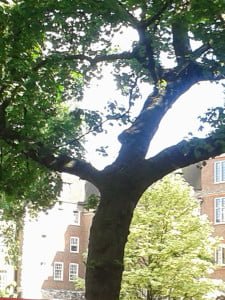
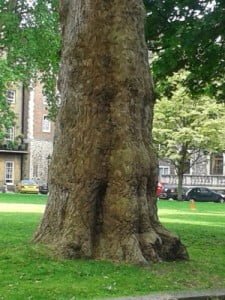
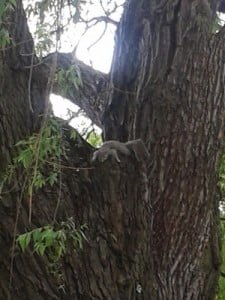 There is a pleasure to lie on the ground and look up at the forest canopy to see the branches working round each other.
There is a pleasure to lie on the ground and look up at the forest canopy to see the branches working round each other.
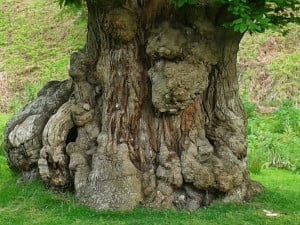
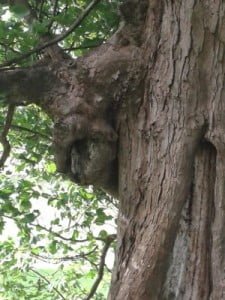
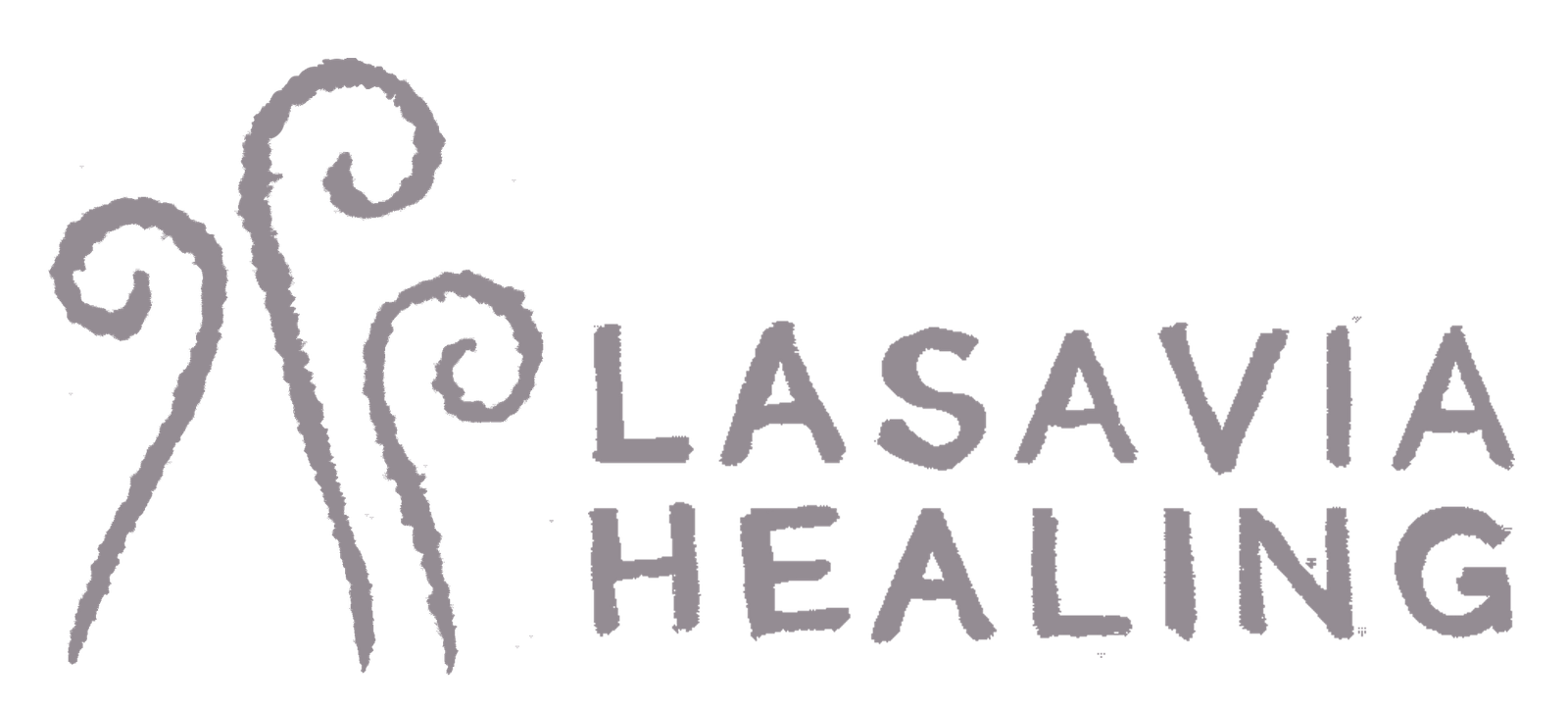
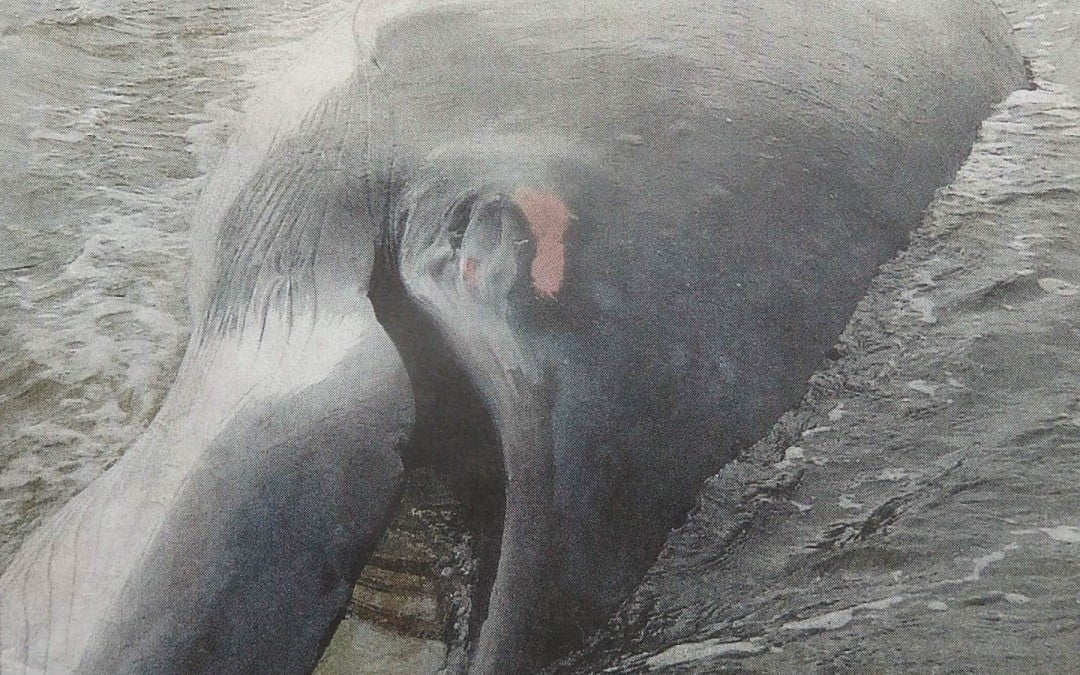
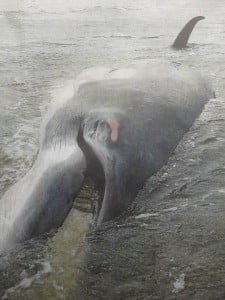 Minke Whale – Dead In life she cruised the oceans deep Sieving time as with the tides. Awakened, untouched in her element Fulfilled and for-filling purpose Solitary Free. She looked as Minke looks, Of fat, length, flippers long, dorsal curved. Bullet head, baleen filters, grooved throat. And carrying unborn calf. She ingested mans dross For she encountered so few and knew little of their way. Innocent, Trusting Alive on the waves Curious of man And now dead She died on beach, Throat clogged. Bulldozer ripped from element water. Dragged with no ceremony Jaw removed Unmarked grave Duveted by dune. Crisscrossed tracks Wind to remake her bed. And long dead.
Minke Whale – Dead In life she cruised the oceans deep Sieving time as with the tides. Awakened, untouched in her element Fulfilled and for-filling purpose Solitary Free. She looked as Minke looks, Of fat, length, flippers long, dorsal curved. Bullet head, baleen filters, grooved throat. And carrying unborn calf. She ingested mans dross For she encountered so few and knew little of their way. Innocent, Trusting Alive on the waves Curious of man And now dead She died on beach, Throat clogged. Bulldozer ripped from element water. Dragged with no ceremony Jaw removed Unmarked grave Duveted by dune. Crisscrossed tracks Wind to remake her bed. And long dead.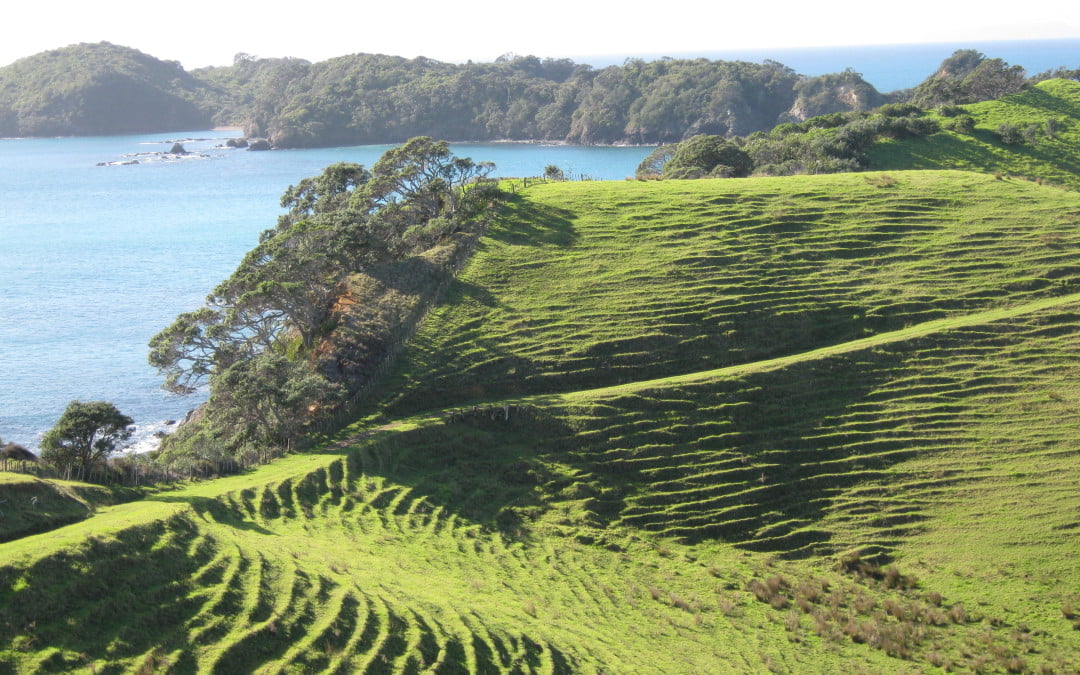
 We are deeply impacted by land, land influences us as we grow as children, it will mould community, create patterns of ritual, of survival and culture.
We are deeply impacted by land, land influences us as we grow as children, it will mould community, create patterns of ritual, of survival and culture.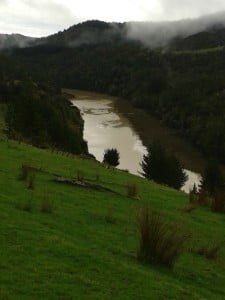 So we need to look at our relationship with land, in this we may see what our relationship is with natural resources, the marking of boundaries on land and what our personal emotional response is to land. This creates identity and we also have cultural identity to land. We may not be aware of our projection of identity and how this may influence our ability to be with a particular place. The projection of identity is so powerful that newcomers to a land, will project on top of that land what they are familiar with and identify with. This is colonization of land, there is no co-creative relationship, the relationship is one of domination and this has the greatest impact on land.
So we need to look at our relationship with land, in this we may see what our relationship is with natural resources, the marking of boundaries on land and what our personal emotional response is to land. This creates identity and we also have cultural identity to land. We may not be aware of our projection of identity and how this may influence our ability to be with a particular place. The projection of identity is so powerful that newcomers to a land, will project on top of that land what they are familiar with and identify with. This is colonization of land, there is no co-creative relationship, the relationship is one of domination and this has the greatest impact on land. Begin with Greeting, a sign of welcome or recognition, to receive or acknowledge.
Begin with Greeting, a sign of welcome or recognition, to receive or acknowledge.



 ~
~










 ~
~








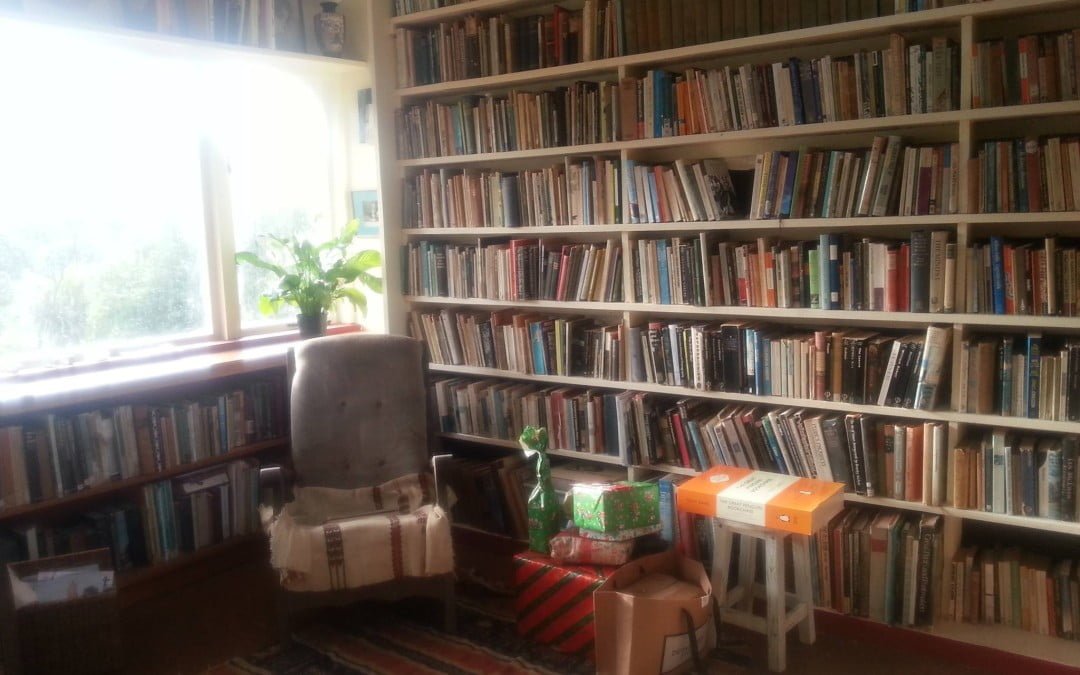
 I grew up with books. The library was positioned south in the house, the shelves were wooden, stained a dark brown, and went from floor to ceiling. A place for meandering, without moving from the odd assortment of chairs. They were the chairs that didn’t quite suit the sitting room.
I grew up with books. The library was positioned south in the house, the shelves were wooden, stained a dark brown, and went from floor to ceiling. A place for meandering, without moving from the odd assortment of chairs. They were the chairs that didn’t quite suit the sitting room. The classics, were generally ‘Everyman’ books, but The Pickwick Papers was published by ‘London and Glasgow Collins clear-type press’. It had the perfume of old book, the paper fine and light with sepia illustrations and a blue hard cover.
The classics, were generally ‘Everyman’ books, but The Pickwick Papers was published by ‘London and Glasgow Collins clear-type press’. It had the perfume of old book, the paper fine and light with sepia illustrations and a blue hard cover.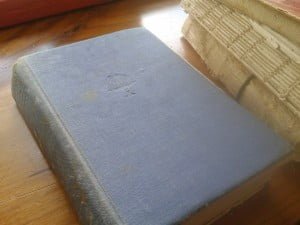 I had a find in the Taumaranui op shop recently. There held together by a rubber band were two old copies of L.M. Mongomery’s books Anne of Green Gables and Anne of Avonlea. The print was larger than the fine ‘clear-type press’ it was published in 1928 by cornstalk publishing company in Sydney and was printed as part of the platypus edition for children. If I could only describe the subtle differences between old book perfume, let us say that it didn’t have the heightened sensory smell of “the Pickwick papers’ I think ‘Anne of Green Gables’ after been loved, had mustered in damp places. Ah but its first sentence needs to be elevated here as like ‘The Pickwick Papers’ it was a book to tease and delight in a sympathetic way its characters. So here let me quote this first sentence to build you up to the decorum required of even the brook that flows through Avonlea. “Mrs Rachel Lynde lived just where the Avonlea main road dipped down into a little hollow, fringed with alders and ladies’ eardrops and traversed by a brook that had its source away back in the woods of the old Cuthbert place; it was reputed to be an intricate, headlong brook in its earlier course through those woods, with dark secrets of pool and cascade; but by the time it reached Lynde’s Hollow it was a quiet, well-conducted little stream, for not even a brook could run past Mrs Rachel Lynde’s door without due regard for decency and decorum; it probably was conscious that Mrs Rachel was sitting at her window, keeping a sharp eye on everything that passed, from brooks and children up, and that if she noticed anything odd or out of place she would never rest until she had ferreted out the whys and wherefores thereof.” What a first sentence. I was hooked. Kneeling down amongst the pile of books on the floor I lifted this one out of the gloom, happily purchased it to read up at the mountain, no peach trees in sight. I blame it on the tiredness but as I read ‘Anne of Green Gables’, tears leaked out and fell down onto the pillow.
I had a find in the Taumaranui op shop recently. There held together by a rubber band were two old copies of L.M. Mongomery’s books Anne of Green Gables and Anne of Avonlea. The print was larger than the fine ‘clear-type press’ it was published in 1928 by cornstalk publishing company in Sydney and was printed as part of the platypus edition for children. If I could only describe the subtle differences between old book perfume, let us say that it didn’t have the heightened sensory smell of “the Pickwick papers’ I think ‘Anne of Green Gables’ after been loved, had mustered in damp places. Ah but its first sentence needs to be elevated here as like ‘The Pickwick Papers’ it was a book to tease and delight in a sympathetic way its characters. So here let me quote this first sentence to build you up to the decorum required of even the brook that flows through Avonlea. “Mrs Rachel Lynde lived just where the Avonlea main road dipped down into a little hollow, fringed with alders and ladies’ eardrops and traversed by a brook that had its source away back in the woods of the old Cuthbert place; it was reputed to be an intricate, headlong brook in its earlier course through those woods, with dark secrets of pool and cascade; but by the time it reached Lynde’s Hollow it was a quiet, well-conducted little stream, for not even a brook could run past Mrs Rachel Lynde’s door without due regard for decency and decorum; it probably was conscious that Mrs Rachel was sitting at her window, keeping a sharp eye on everything that passed, from brooks and children up, and that if she noticed anything odd or out of place she would never rest until she had ferreted out the whys and wherefores thereof.” What a first sentence. I was hooked. Kneeling down amongst the pile of books on the floor I lifted this one out of the gloom, happily purchased it to read up at the mountain, no peach trees in sight. I blame it on the tiredness but as I read ‘Anne of Green Gables’, tears leaked out and fell down onto the pillow.
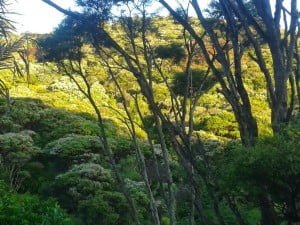 Welcome to our December newsletter. One of the aspects I love about Waiheke at this time of the year is the mass flowering of the kanuka, some hillsides are coated in white blossom. Last week I received a small gift, with a card that said “E iti noa ana na te aroha” meaning a small thing given with love. I love these words, they fall like a poem, they help make a pathway to how a gift is given and received. Christmas here in Aotearoa is an intense dash towards the end of the year, the height of summer, a need to complete, a rush to attend. Whilst I talk to people in the northern hemisphere they are settling into the depths of winter, the counting of the days down to christmas. Going through the shortest day and emerging, the days slowly growing longer the new year, the celebration of the sun, the formation of intention and potential. Here I would like to celebrate the height of the sun, the long days, the plums just ripening, the early morning walks. May your summer be flourishing and may you find joy in your days. May you receive and give the small things given with love. As we look back, we see how much has happened, both in the publishing, and development of the Lasavia courses and workshops. On the publishing side, we have successfully launched Mike’s novel Hold my Teeth While I Teach You to Dance at a buzzy little Waiheke event, which also featured Jazz saxophonist and flautist Jim Langabeer. We are getting some great feedback from readers who are appreciating the humour of the book, which you can catch on the lasavia website. We are lucky to have secured the services of Tara Young of Nelson to work as Marketing Manager. Tara is actively developing her own writing, and so brings a lovely mix of interests and skills to Lasavia publishing. Meanwhile Mike is working slowly on new project pulling together the writings and drawings of Leila Lees, for eventual publication at the end of next year. More on this as it develops. Our website’s active poetry thread has not been very active, although it was lovely to see Mike’s sister’s poems from great barrier island. We would like to invite contributions to the poetry thread. Writing, especially poetry, can be an integral part of our spiritual development as we seek to find words to fit our experience. Please email Tara on
Welcome to our December newsletter. One of the aspects I love about Waiheke at this time of the year is the mass flowering of the kanuka, some hillsides are coated in white blossom. Last week I received a small gift, with a card that said “E iti noa ana na te aroha” meaning a small thing given with love. I love these words, they fall like a poem, they help make a pathway to how a gift is given and received. Christmas here in Aotearoa is an intense dash towards the end of the year, the height of summer, a need to complete, a rush to attend. Whilst I talk to people in the northern hemisphere they are settling into the depths of winter, the counting of the days down to christmas. Going through the shortest day and emerging, the days slowly growing longer the new year, the celebration of the sun, the formation of intention and potential. Here I would like to celebrate the height of the sun, the long days, the plums just ripening, the early morning walks. May your summer be flourishing and may you find joy in your days. May you receive and give the small things given with love. As we look back, we see how much has happened, both in the publishing, and development of the Lasavia courses and workshops. On the publishing side, we have successfully launched Mike’s novel Hold my Teeth While I Teach You to Dance at a buzzy little Waiheke event, which also featured Jazz saxophonist and flautist Jim Langabeer. We are getting some great feedback from readers who are appreciating the humour of the book, which you can catch on the lasavia website. We are lucky to have secured the services of Tara Young of Nelson to work as Marketing Manager. Tara is actively developing her own writing, and so brings a lovely mix of interests and skills to Lasavia publishing. Meanwhile Mike is working slowly on new project pulling together the writings and drawings of Leila Lees, for eventual publication at the end of next year. More on this as it develops. Our website’s active poetry thread has not been very active, although it was lovely to see Mike’s sister’s poems from great barrier island. We would like to invite contributions to the poetry thread. Writing, especially poetry, can be an integral part of our spiritual development as we seek to find words to fit our experience. Please email Tara on 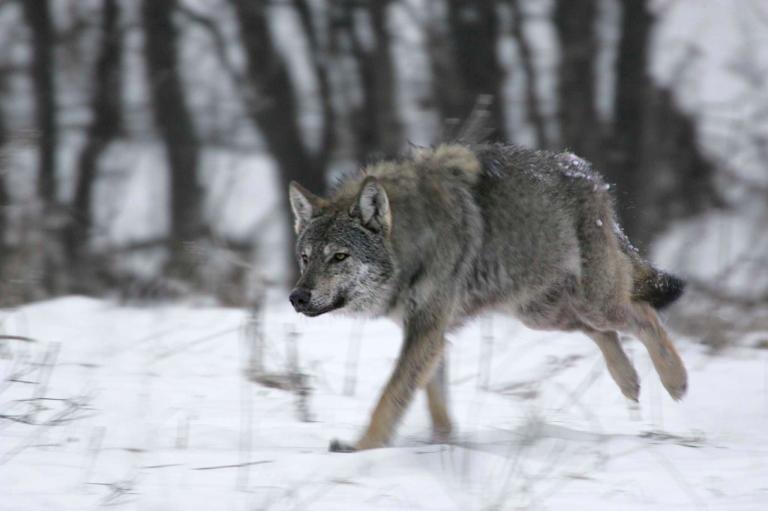

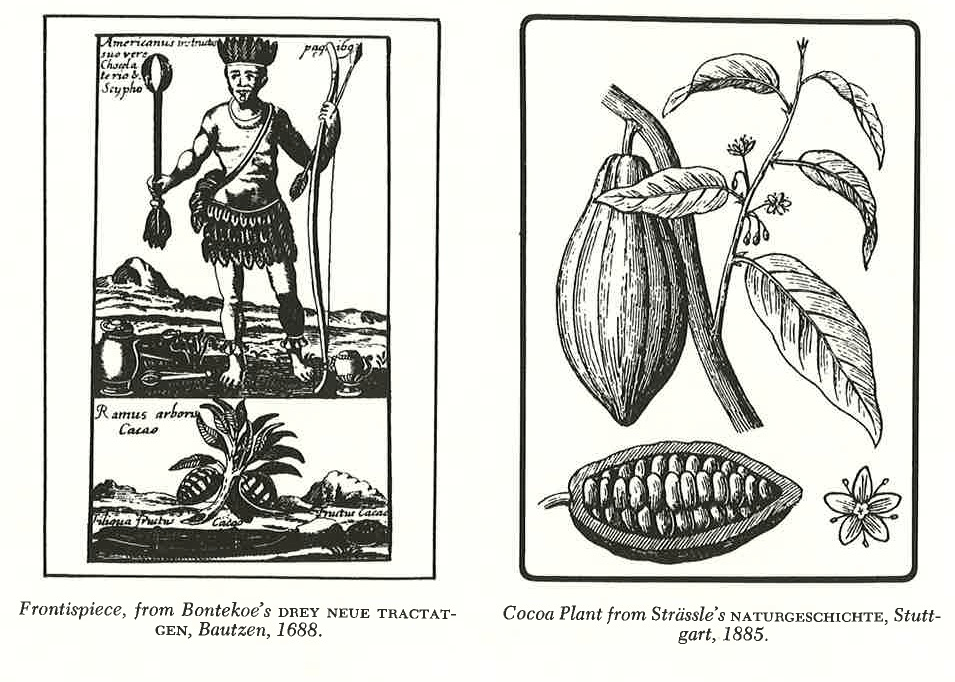
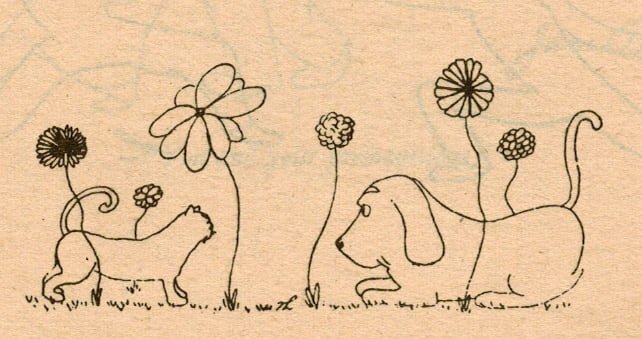
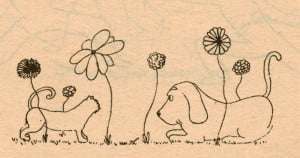 James Thurber wrote “A dog wags its tail with its heart.” I used to hang out with Dickens, Thurber, Tolstoy and Gerald Durrel, curled in front of the fire or lying in the garden with the last light glancing in for a look. I hang out with the neighbour’s dogs. The neighbour’s dogs were dashhounds, small irrepressible bundles of joy and curiosity, they would find me in the garden and then we were off on some adventure. I reckon that James Thurber drew from a dogs perspective with his insights into human nature and relationships.
James Thurber wrote “A dog wags its tail with its heart.” I used to hang out with Dickens, Thurber, Tolstoy and Gerald Durrel, curled in front of the fire or lying in the garden with the last light glancing in for a look. I hang out with the neighbour’s dogs. The neighbour’s dogs were dashhounds, small irrepressible bundles of joy and curiosity, they would find me in the garden and then we were off on some adventure. I reckon that James Thurber drew from a dogs perspective with his insights into human nature and relationships.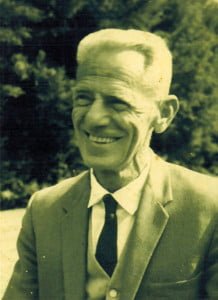 I was thinking whilst I wrote this how much I loved my grandfather, I felt the regret in my heart as if I had not been present with him. I felt selfish around the opportunities I had missed as I grew away from him. With the selfishness lay guilt as if I I had somehow deliberately held back from simply loving him. That’s when I thought about dogs and the simple devoted love and joy you get from hanging around a dog. It’s like instead of being in a relationship I had been in reaction to the relationship. Instead of love being simple it had a cocktail of guilt, feelings that one owes a person something, or that you have to be something for that person, followed by not being enough for that person.
I was thinking whilst I wrote this how much I loved my grandfather, I felt the regret in my heart as if I had not been present with him. I felt selfish around the opportunities I had missed as I grew away from him. With the selfishness lay guilt as if I I had somehow deliberately held back from simply loving him. That’s when I thought about dogs and the simple devoted love and joy you get from hanging around a dog. It’s like instead of being in a relationship I had been in reaction to the relationship. Instead of love being simple it had a cocktail of guilt, feelings that one owes a person something, or that you have to be something for that person, followed by not being enough for that person. Once, when I was a student sitting at a bus stop at Courtney Place in Wellington, I was hungry and I had spent my last few coins of the week on a bag of hot chips. The chips were warm and smelt glorious and I savoured them. There was a stranger sitting next to me and without asking, he just reached over and started helping himself to these hot chips. It was so surprising that after he continued to help himself I found myself giving over the bag of chips to him, which he took as a given.
Once, when I was a student sitting at a bus stop at Courtney Place in Wellington, I was hungry and I had spent my last few coins of the week on a bag of hot chips. The chips were warm and smelt glorious and I savoured them. There was a stranger sitting next to me and without asking, he just reached over and started helping himself to these hot chips. It was so surprising that after he continued to help himself I found myself giving over the bag of chips to him, which he took as a given.
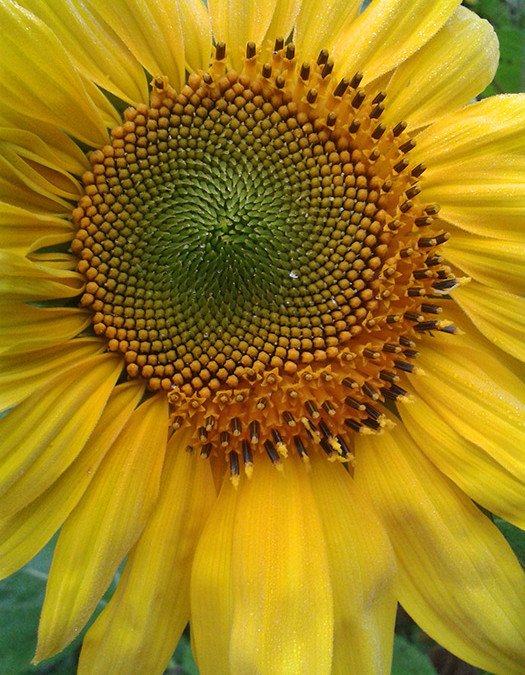
 Intention, ritual and relationship to essential spiritual force are all components of the sacred circle. The central requisite to the sacred circle is the invocation of spirit. I use the word spirit here to mean the divine light, the spirit that moves through all things, the unconditional energy of the universe. We may invoke this by speaking our intention. We may sing, drum, light a candle, give prayers, or simply be in the quiet allowing a connection to this great mystery of life. We can lose this connection in our ordinary lives and by meeting in circle we are reminded and this connection is strengthened.
Intention, ritual and relationship to essential spiritual force are all components of the sacred circle. The central requisite to the sacred circle is the invocation of spirit. I use the word spirit here to mean the divine light, the spirit that moves through all things, the unconditional energy of the universe. We may invoke this by speaking our intention. We may sing, drum, light a candle, give prayers, or simply be in the quiet allowing a connection to this great mystery of life. We can lose this connection in our ordinary lives and by meeting in circle we are reminded and this connection is strengthened.
 In the early morning, I got stuck with my writing and wandered around the garden. On the mint was a cicada. My immediate impression was that it was the most unusual species of cicada I had ever seen and then I saw it had just emerged from its larvae form leaving its empty brown case beneath it. Its gesture was a protracted stretch into stillness.
In the early morning, I got stuck with my writing and wandered around the garden. On the mint was a cicada. My immediate impression was that it was the most unusual species of cicada I had ever seen and then I saw it had just emerged from its larvae form leaving its empty brown case beneath it. Its gesture was a protracted stretch into stillness.

